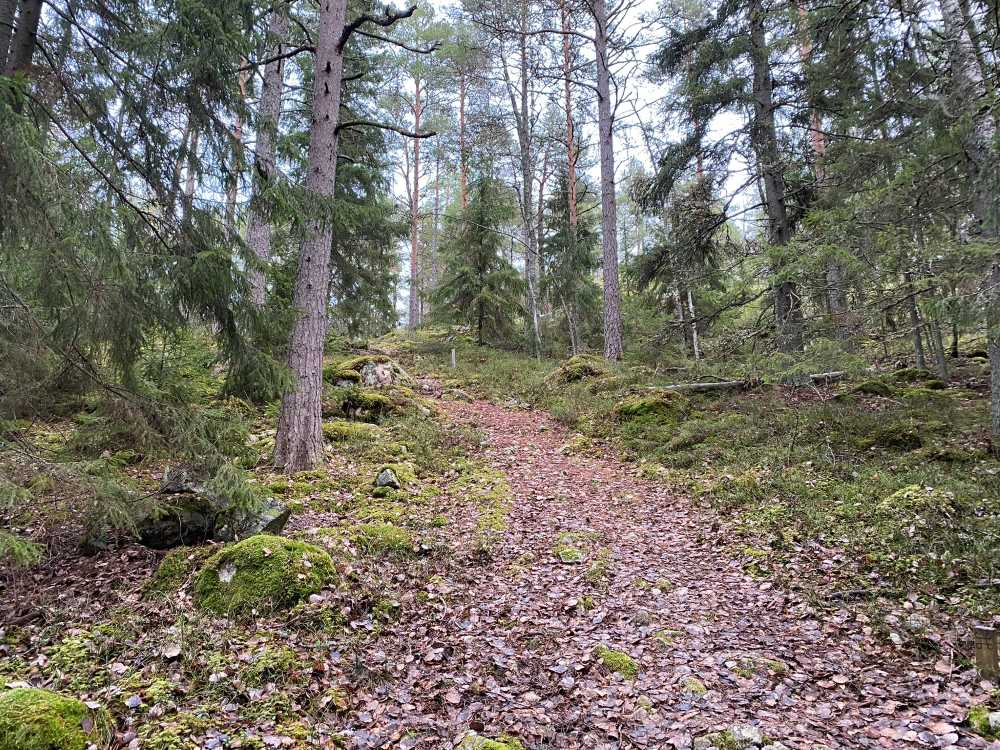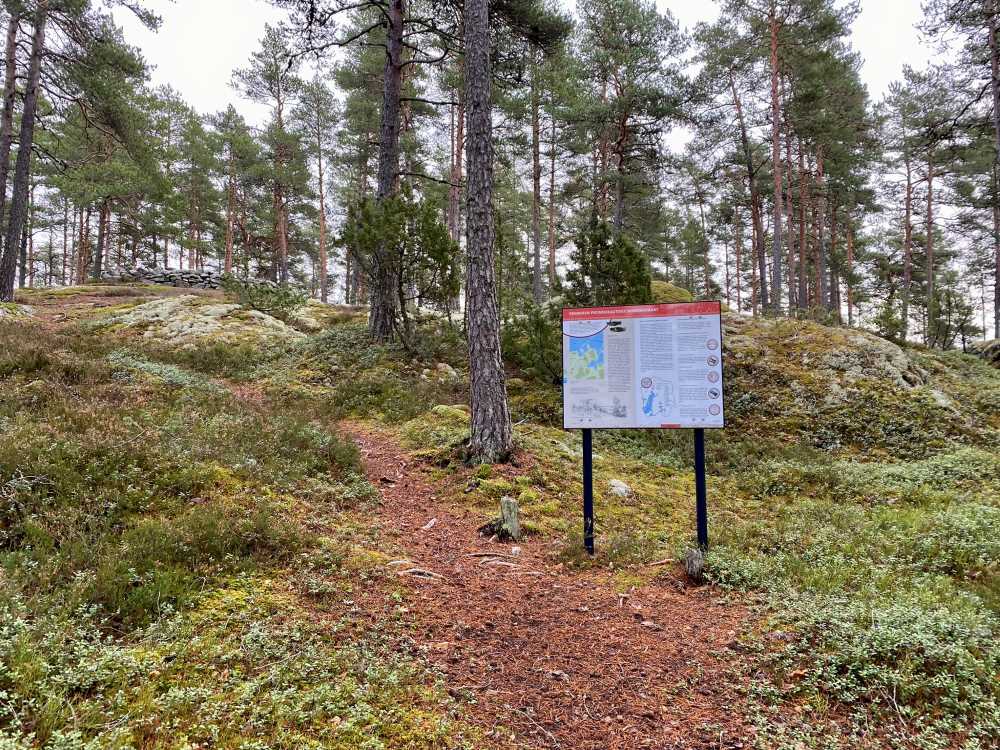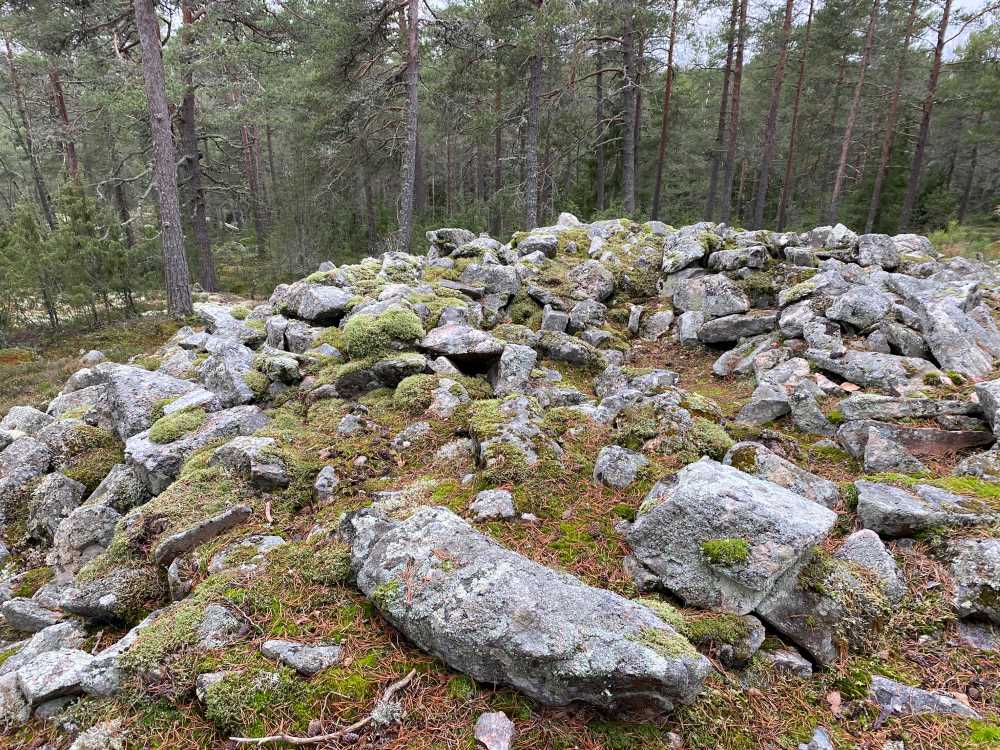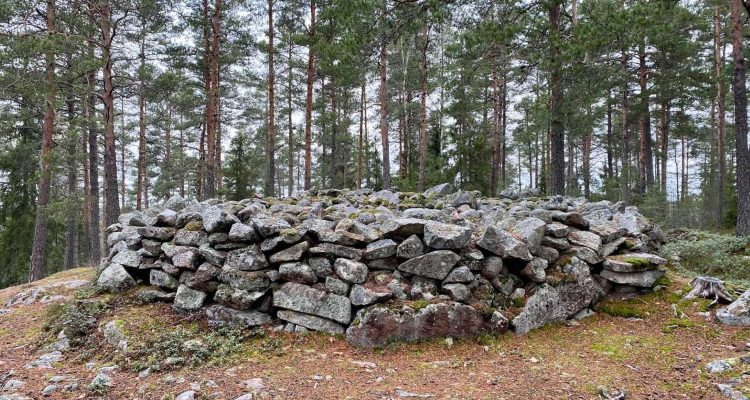Penimäki heap tombs, Penimäen röykkiöt, says a small sign by Käräjätie road in Paimio. A small trail seems to be leading into the forest. I park the car on a small parking lot and head up the hill. The forest is quiet but I can hear a lot of noises from nearby highway 1. Penimäki heap tombs are located in between highway 1 and old highway between Turku and Salo.

First, I see a mailbox with a guestbook in it. Then I notice a big sign that explains history of the Penimäki heap tombs. Behind the sign, I see the first heat tomb, giant’s stove as they are often called in Finnish. What a fascinating little hill, I think to myself when I begin exploring the area.

Paimio is a prehistorical treasure trove
During Bronze Age, 1700-500 B.C., this hill was above sea level and on sea shore as water level was about 20 meters higher than today. There are altogether 30 heap tombs in the forests of Paimio. Only five of them have been opened and researched.
Bronze Age mounds were built on high hills overlooking the sea, and they were often burial sites. Using mounds as burial sites was a burial practice brought to coastal areas of Finland from elsewhere in Europe. Notable persons were revered by burying them in monumental heap tombs located on the top of high hills. Not all of the heap tombs are burial sites thought. They were maybe used as landmarks and ritual places.
In the Bronze Age, people settled into permanent houses, and they had cows and sheep. Barley and wheat were grown, but hunting and fishing remained important. Bronze was expensive export metal and only about 170 bronze-based objects have been found in the whole country from those times. Six of them have been listed to be found from Paimio. For example, a Bronze Age buckle and a bronze ax with wooden handle still preserved inside of it have been excavated from the clay.
Fascinating Penimäki heap tombs
Penimäki heap tombs were first documented by archeologist Hjalmar Appelgren in 1885. There are three tombs in this area, two next to each other and third one further away on the same hill.
The biggest mound here has been opened and put back together in 1926 by archeologist A.M. Tallgren. It is about one meter high, round with 15-meter diameter. It used to be known as Penimäen vare. No objects were found inside this large tomb, only some ashes.
Penimäen vare is a massive mound that really reminds me of a stove in sauna. In Finnish folklore, the heap tombs were referred as giant’s stoves (=hiidenkiuas) because they were believed to be homes of goblins (=hiisi).
The second heap tomb has a small depression in the middle, but this one has never been researched. Who knows what kind of secrets or treasure it is hiding inside. Certainly, a few snakes at the very least, I’m sure.

Directions to Penimäki
Address:
Penimäen muinaispolku
Käräjätie 65
21510 Paimio
Facilities: There are no facilities in the area. There is a free parking area about 300 meters from the tombs.
When to go: I recommend visiting this place when there is no snow.
Special to know: This area is protected by the Antiquities Act (295/63). It is forbidden to excavate, cover, alter, damage or remove ancient relics or disturb them in any other way.
More about Bronze Age tombs in Finland
- Ancient tombs are the crowns of Viitankruunu hills
- Kasakallio hill is home to ancient tombs and guard lights
- Lehtisaari heap tombs are a historical gem in Helsinki
- Lush Hanikka nature trail has ancient tombs, glacial erratics, and views by the sea
More nature destinations in Paimio
- Exploring Hiekkahelmi trail in Paimio with new friends
- Paimio hiking trail – a well-hidden gem of Southern Finland

